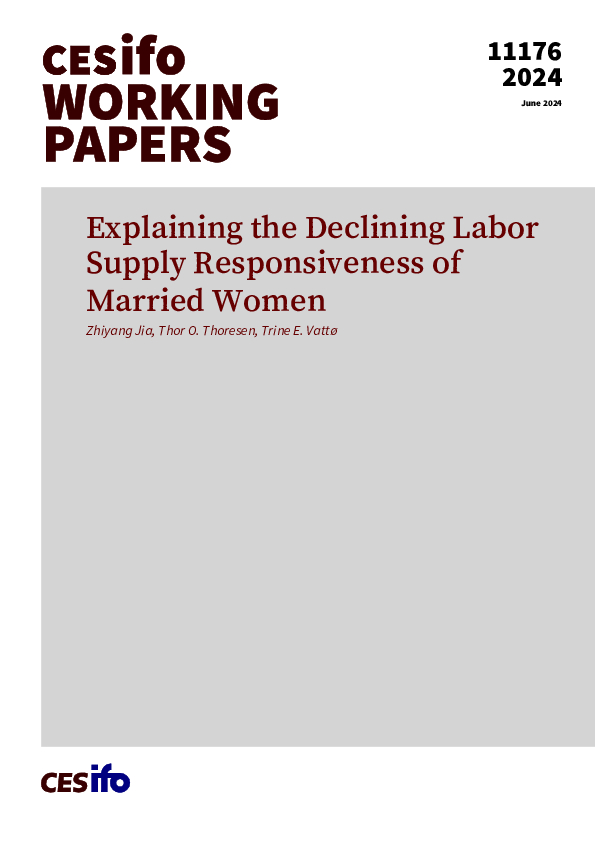Explaining the Declining Labor Supply Responsiveness of Married Women
CESifo, Munich, 2024
CESifo Working Paper No. 11176

While the consensus in the literature is that the labor supply of married women is more responsive than that of married men, there are indications that this gap is narrowing. Our estimations of a structural discrete choice labor supply model using repeated cross-sectional data confirms this trend for Norway – the gross wage elasticity for married women decreased from approximately 0.7 in 1997 to under 0.3 in 2019. We further demonstrate how a simulation procedure based on the labor supply model offers insights into the factors driving this decline. We identify four categories of explanations: changes in the sociodemographic composition of the population, changes in preferences and labor market options, wage changes, and tax scheme changes. Our analysis suggests that general wage growth over the period is the primary reason for the decline in responsiveness among married women.
Public Finance